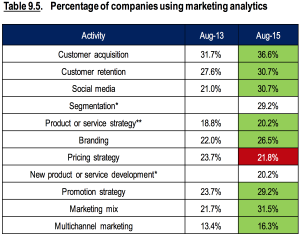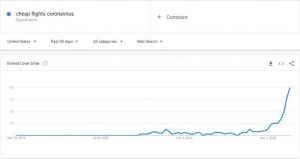— November 8, 2017

geralt / Pixabay
While people are still grumbling about Kindle and iPads replacing real books, many authors are thanking technology. About 1 million new social media users come online every day. Nearly 2.56 billion use social media through their mobile devices, which translates into 34% penetration.
This is not some fairytale story! Social media is the best way to reach out to audiences, including the ones who are probably interested in buying your products right now.
Authors turn to Twitter, Facebook, and Instagram to promote their newly released books. Fashion designers and fitness experts do the same for their products.
Why is Social Media So Lucrative?
Using social media for marketing is a cost-effective and a insightful strategy. The information collected from online interactions generates data points that DBAs can even use to create marketing databases.
This data can later help the data expert figure out which products perform better and which ones rake in more profit. Social media provides all marketers with a consolidated solution, containing a wide range of tools for promotions as well as collecting customer feedback.
There’s just one challenge – social media users do not like direct promotion.
Be Crafty and Smart About Promoting
Think of this: if you just went online and started “yelling” at people to buy your new product, no one would. Simply Tweeting “Buy our new product” will get no traction. Any Tweet without reactions, replies, and retweets are as good as non-existent.
Therefore, social media marketing needs to be tactful. Like all marketing platforms, Twitter has a range of tactics that do and do not work effectively. Focus your attention on trending topics, hashtags and keyword specific search trends to create your daily Tweet content.
Balance Out Your Posts
Studies show that the ideal seller writes about 70% – 80% of their posts about their regular life. They post about their likes, dislikes, politics, cats, dogs and real-life issues that concern most people. The key is to know what your target audience is most likely to engage with.
When people were talking about the US Presidential Elections, the Tweets that mentioned #ThanksObama, #DonaldTrump or #HilaryForPresident gained more traction.
It is all about the right timing for social media marketing. You may be using Instagram, Facebook, LinkedIn or Twitter. if you miss the right window, even the most sensational bits of updates/status/Tweets will not deliver your full intended impact.
Minimize Promotional Content
Promotional content can be 20% – 30% of the total content. Even then, you need to introduce variations in the content. You can’t just include Amazon links and hope for people to buy your products religiously.
If you are an author, you should include the reviews of your book by other fellow authors, maybe a snippet of the preface, and even award ceremonies and statistics of reception. Along with your work, you should also share the work of other authors and poets you enjoy.
A significant portion of these tweets and shares can be RTs. In fact, without RTs, you cannot hope for social network fame and fortune!
Always Keep a Blog!
Your company blog is the secret weapon of social media marketing. If you aim to compete with leading brands without a blog, you will fall way behind. Your blog needs to contain everything people will want to know about your brand, your products, and your services.
No one wants to hear brands yammer on and on about their products and services only. Always mix it up with trends in commerce, economic policies, and anything else your target customer might find interesting or intriguing.
For example – if you are promoting fitness products, your target group might be looking for ways to lose weight. You can blog about weight loss diets, easy 20 minute exercises to reduce weight, and supplements that help with weight loss. You get the drift!
Your blog posts should contain links to your products without making it seem too apparent. A smart way to do this: use the link as an answer to a popular question. This meets keyword requirements and promotes your products online as well.
You can simply share content and links to your blog via your social networking account. Sharing blog posts and articles on LinkedIn and Twitter has been an age-old but effective process for brands and individuals.
Conclusion
Social media presents all sellers and brands a brilliant opportunity to go out there and interact with competitors. You can get in touch with your customer and understand what they need.
These strong social media platforms bypass the need for a middleman to collect information about your target audience.
Digital & Social Articles on Business 2 Community
(47)
Report Post








